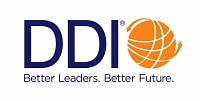Estimated reading time: 6 minutes
(Editor’s Note: Today’s article is brought to you by our friends at DDI, a global leadership firm that helps organizations hire, promote, and develop exceptional leaders. They were recently named to the Forbes America’s Best Employers 2024 list. Congrats to them and enjoy the read!)
There are two types of organizational change. There’s the big sweeping transformational change that impacts everyone and everything in the organization. And there are the small incremental changes that impact individuals and teams. Both are important but today I want to talk about the latter.
The reason I want to focus on small incremental changes is because they can be a precursor to successfully managing a large-scale transformation. Let’s face it, can you really expect transformational change from an organization that can’t effectively manage small daily changes?
The bottom line is that change happens all the time. And change can be hard. Even when the change is welcome, it still can be hard. It is critical for organizations to prepare their leaders, employees, and teams to effectively handle change.
In our mini-series about team management, we’ve talked about welcoming new team members and how to create team engagement. In this article, I’d like to explore how organizations can prepare leaders for three common types of change.
Before we start talking about the types of change, one thing to remember. When we talk about teams, we’re not just referring to departments or divisions within an organization. Other teams in the organization could be a committee or group that meets regularly, like the safety committee or an employee resource group (ERG). These ideas could also apply to temporary teams such as a project implementation team.
Change #1 – Team leader changes.
Teams may experience a change in team leadership, either because someone is leaving the organization, or the leader received a promotion, transfer, or job change. For temporary teams, an individual may lead the team for a year and then hand responsibilities off to someone else.
One example is employee resource groups (ERGs). The team leader might not drive the group’s direction per se, but rather act as a project manager and point person. ERG team leads may change based on organizational or employee priorities.
Whether you’re an outgoing or incoming team leader, handling the transition well is important to the success of the team. There are three things to focus on during the transition:
- Building trust. Outgoing leaders have the trust of the current team. They need to set the stage for the incoming leader to build trust. Incoming leaders will want to focus on building relationships with their new team and that starts with trust.
- Listening. Incoming leaders often have lots of new ideas, and that’s great, but they need to listen and build trust before announcing changes. Outgoing leaders (especially ones staying in the organization) will want to listen and be open minded to the changes planned for the team. It’s often not a reflection of them doing anything wrong.
- Showing empathy. Both outgoing and incoming leaders need to remember what it was like when they faced a change with who they reported to. Employees expect their leaders to support them during this time of change.
Team leader changes are a fact of business and an ideal time to discuss this type of change is during leadership development programs.
Change #2 – Scope of work changes.
Scope of work changes do happen, and temporary teams face scope of work changes all the time. Let me share a couple of personal examples to illustrate.
In one of my in-house human resources roles, we were asked to take responsibility for payroll. Later in that same role, we were asked to take responsibility for security. Everyone in the organization interacts with these three departments, and they were being combined. Not only did we have new team members, but we had new work responsibilities.
An example of a temporary team change involved a consulting project I once worked on where the team was originally brought together to address recruiting issues. But after some assessment of the situation, we realized the issue was training related, so the scope of work for the team changed.
If teams are facing a scope of work change, they need to understand the reason why. Team leaders should take on the responsibility of sharing rationales with their teams. I’ve always found that even if team members don’t like or agree with a change decision … if they understand it, that’s a huge step toward reducing resistance and creating change management success.
Just saying, “Well, senior management said so.” isn’t a valid reason. Even if it’s the truth. It’s okay to say that the organization is making changes to reduce expenses. Or to say that the change is to reduce organizational bureaucracy and redundancy. Sharing thoughts, feelings, and rationale behind decisions will go a long way in building trust.
A leadership development program can prepare leaders for these conversations because it’s important for leaders to become effective in delivering change related messages, especially if the message could be mixed.
Change #3 – Team member changes.
The third type of team change that happens is when members of the team change. Like the team leader scenario (#1), it could be because someone is leaving the organization. Or because they’ve been promoted, transferred, or have a job change.
It could also be because the scope of work for the team is changing (#2). For example, I mentioned the story above where I was working on a consulting team that was originally hired to address a recruiting issue. Then we identified the issue as training. Well, the people on the team with training experience stayed to continue work on the project. The people with only recruiting experience transitioned off the team. No one did anything wrong, the scope of work for the team was simply changing.
Like with a team leader change, it’s important to give employees a proper transition.
As with a new employee, leaders should prepare an onboarding plan for internal employees who are promoted or changing roles – including:
- Training customized for their role, skills, and experiences
- Learning goals for the first 30, 60, and 90 days
- Ample time for learning and practice
- Opportunities to provide feedback
Leadership development programs can not only prepare your leaders to get their team members started on the right foot but engage and retain them in the long term.
Leadership Development Programs Provide the Tools Leaders Need to Manage Change
The key to successfully managing any type of change starts with leaders. Organizations should give leaders the training and tools they need to manage change at every level. And that happens during leadership development. In turn, proper development will allow the leader to provide support to employees.
If you want to learn more about what it takes to lead change, be on the lookout for our next article. For a sneak preview of the themes we’ll cover, check out this episode of the Leadership 480 Podcast on “How Leaders Can Drive Change Effectively” with Verity Creedy, vice president of product management at DDI.
The post Create Effective Organizational Change Through Leadership Development appeared first on hr bartender.






